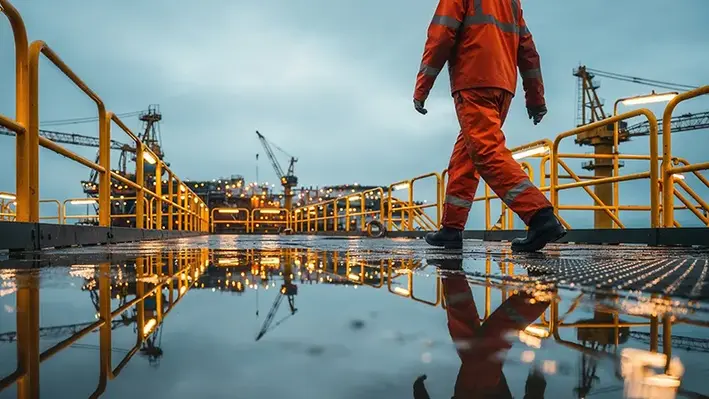
 The forward look for well services and interventions across the Asia Pacific market, and for other industry providers, bodes well as spending levels accelerate across the region.
The forward look for well services and interventions across the Asia Pacific market, and for other industry providers, bodes well as spending levels accelerate across the region.
In the latest insight paper by Westwood, offshore investment is expected to remain resilient despite a turbulent year for global oil markets.
Between 2025 and 2029, offshore engineering, procurement, construction and installation investment is projected to reach US$310bn globally, with APAC accounting for 27% of this spend, it notes.
Southeast Asia alone is set to award US$37bn in new offshore contracts, led by deepwater gas projects in Indonesia, and emerging carbon capture and storage (CCS) initiatives in Malaysia.
Thailand is also embarking on its maiden CCS scheme.
“Oil and gas companies – including regional NOCs – continue to prioritise decarbonisation, though the approach is evolving toward more disciplined oil and gas investment and cost efficiency,” Westwood notes in the paper.
“This shift is expected to drive down industry costs, even as supply chain margins remain under pressure.”
These macro trends are influencing not just oil and gas, but also the region’s growing offshore wind sector, it adds.
This could mean a weakening in rates for the offshore marine fleet that services the region’s oil and gas industry.
There are currently 84 active platform supply vessels and 449 anchor handling tug/supply vessels in the Asia Pacific region, operated by key incumbents such as Wintermar, HADUCO and Nam Cheong.
Dayrates for offshore support vessels have softened from recent record highs yet continue to exceed historical averages, according to Westwood, sustained by firm utilisation levels amid tightening supply as units are redeployed out of the region.
In its concluding remarks, Westwood notes that the Asia Pacific offshore market is navigating both challenges and opportunities as 2025 draws to a close.
From ageing fleets and cost pressures to the promise of offshore wind and deepwater gas, the region is poised to play a key role in the global energy transition, it adds.
As Asia Pacific continues to evolve, Westwood notes that staying informed and engaged will be key for all stakeholders across the energy value chain.
“As frameworks evolve and investment flows shift, collaboration between operators, service providers and governments will be essential to unlocking sustainable growth,” it states.
“Innovation in technology, financing and project execution will define the next chapter of offshore energy.”

 With an aim to advance optimal and sustainable energy supply, PETRONAS, through Malaysia Petroleum Management (MPM), has signed several Memoranda of Understanding (MoUs) at ADIPEC 2025.
With an aim to advance optimal and sustainable energy supply, PETRONAS, through Malaysia Petroleum Management (MPM), has signed several Memoranda of Understanding (MoUs) at ADIPEC 2025.
In the spirit of global collaboration and technology driven innovation, the MoUs include partners such as SLB, Beicip-Franlab, ConocoPhillips, Eliis, PTTEP, Microsoft, Shell, and TotalEnergies. The partnerships will drive seismic imaging and artificial intelligence (AI) and machine learning (ML) development enabled by high-performance computing (HPC).
Senior Vice President of MPM, Datuk Ir. Bacho Pilong, said, “Partnerships like these are essential in advancing Malaysia’s upstream landscape. By combining the strengths of energy operators and technology innovators we are not only strengthening our exploration and development capabilities but also setting the foundation for a more efficient and resilient Malaysia upstream sector."
The partners will work together to leverage dynamic modelling and agentic artificial intelligence (AI) for real-time data integration, uninterrupted predictive analysis, and proactive decision-making. With the deployment of Normally Unattended Facilities and Remote Autonomous Operations (NUF-RAO), partners can reap benefits right from subsurface evaluation to offshore facility optimisation.
These advancements will also support more efficient technical evaluations and investment decisions. These collaborations fit perfectly with MPM's managerial role in ensuring the best petroleum arrangements and drawing high-value upstream investments.
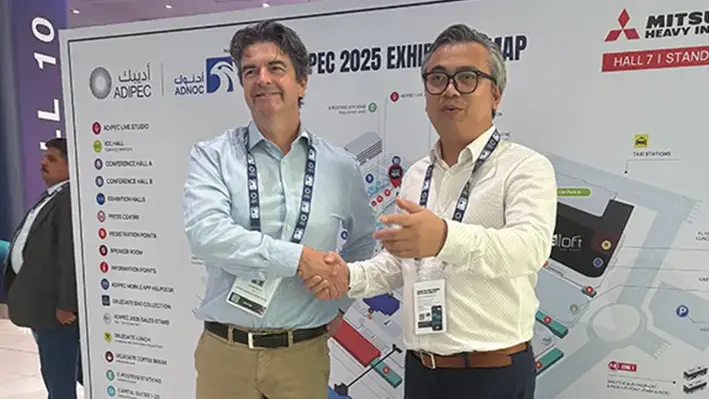
 Tredwell, a leading Malaysian energy solutions provider, has announced the signing of a new distribution agreement with Matrix Composites & Engineering.
Tredwell, a leading Malaysian energy solutions provider, has announced the signing of a new distribution agreement with Matrix Composites & Engineering.
Under the agreement, Tredwell will distribute Matrix’s MAX-R low friction centraliser range across Malaysia, helping operators enhance well construction efficiency, safety, and sustainability.
Tredwell is a Malaysian-based energy solutions provider delivering innovative engineering and technology services to the oil and gas industry.
With a strong presence across East and West Malaysia, it specialises in well completion, well intervention, and drilling solutions, supported by in-house research and development and strategic global partnerships.
The company is committed to advancing operational efficiency and sustainability through high-quality, reliable, and cost-effective technologies.
The signing ceremony for the new distributorship took place at the Adipec industry showcase in Abu Dhabi, with Aaron Begley, CEO of Matrix Composites & Engineering, and Tengku Mohd Adam, CEO of Tredwell, formalising the agreement.
The new partnership strengthens Matrix’s presence across south-east Asia and expands its global network, according to Begley.
“Malaysia is a key market for Matrix, and this partnership reflects our commitment to delivering innovative composite solutions to operators in the region,” he said.
It also marks another milestone in Matrix’s strategy to expand its global reach through strong regional partnerships, enabling localised support and faster delivery of advanced composite technologies.
“We are excited to work with Tredwell to support customers in achieving operational excellence.”
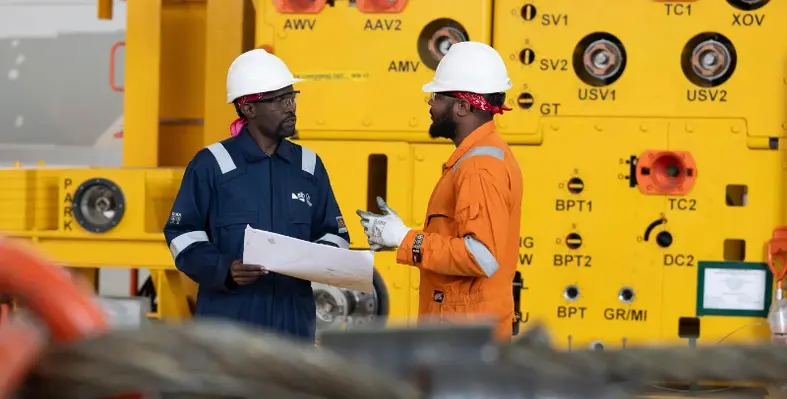
 Two engineering, procurement and construction (EPC) contracts have been awarded by PTT Exploration and Production Public Company Ltd. (PTTEP) to SLB’s OneSubsea joint venture for work in Malaysian offshore fields.
Two engineering, procurement and construction (EPC) contracts have been awarded by PTT Exploration and Production Public Company Ltd. (PTTEP) to SLB’s OneSubsea joint venture for work in Malaysian offshore fields.
The contracts build on a 20-year collaboration between the two companies. As part of the EPC contracts, OneSubsea will deliver comprehensive subsea production systems for the Alum, Bemban and Permai deepwater gas fields located in Block H and the Kikeh field – Malaysia’s first deepwater oil project.
The scope of work includes horizontal subsea trees, umbilicals, control systems, and associated services.
Mads Hjelmeland, Chief Executive Officer at SLB OneSubsea, said, “We are proud to continue our long-standing relationship with PTTEP, which has seen the delivery of more than 50 systems over the past 20 years. By leveraging our experience in complex deepwater environments and adopting a highly collaborative, early engagement process with our clients, we will help PTTEP unlock maximum value from these projects.”
The Block H gas development began producing natural gas from the Rotan and Buluh fields in 2021, while the Kikeh oil and gas field has been in production since 2007. SLB OneSubsea’s experience of deploying technology in complex deepwater environments will further extend the life of these two fields.
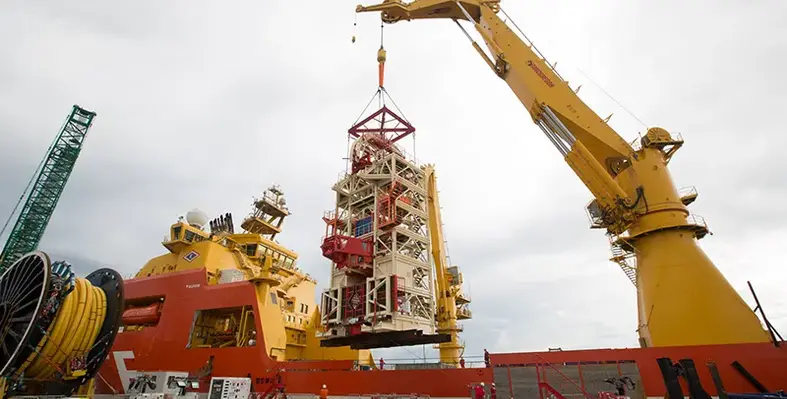
 Maritime Developments Ltd (MDL) has secured a significant subsea installation contract in the Asia-Pacific region, involving the laying of two subsea cables and two umbilicals.
Maritime Developments Ltd (MDL) has secured a significant subsea installation contract in the Asia-Pacific region, involving the laying of two subsea cables and two umbilicals.
The project, which will take place at water depths of between 800 and 1,200 metres, reinforces MDL’s growing footprint across the region.
The 60-day offshore campaign is scheduled to mobilise from Singapore in 2026, with MDL providing a complete flex-lay spread for the operation. This will include one of the company’s renowned Horizontal Lay Systems (HLS) - a compact, integrated package that has delivered proven results on both installation and decommissioning projects worldwide. The spread will also feature MDL’s high-capacity four-track tensioner and its flagship Reel Drive System (RDS), ensuring precision and reliability throughout the installation.
As part of its long-term strategy to support clients in the Asia-Pacific market, MDL recently opened a new regional office in Singapore. The hub will serve as a base for operations, project delivery, and client engagement across the Eastern Hemisphere.
The Singapore office is led by Bernice Tan, MDL’s Regional Manager for APAC, who brings more than 15 years of experience in the Asian energy sector, covering business development, commercial management, and supply chain operations.
“With years of experience promoting flex-lay equipment and services in the region, I’m thrilled to join MDL - a company that truly shares my values,” said Tan. “This expansion marks an important step in strengthening MDL’s ability to support clients globally. With our equipment now based in Singapore, we can deliver faster, more efficient, and localised service across Asia-Pacific.”
Tan added that her priority will be to work closely with long-standing and new clients as MDL continues to deliver world-class subsea engineering solutions to one of the world’s most dynamic offshore markets.
This contract highlights MDL’s commitment to providing innovative, cost-effective subsea solutions and underlines its ambition to be a leading provider of offshore installation services throughout the Asia-Pacific region.
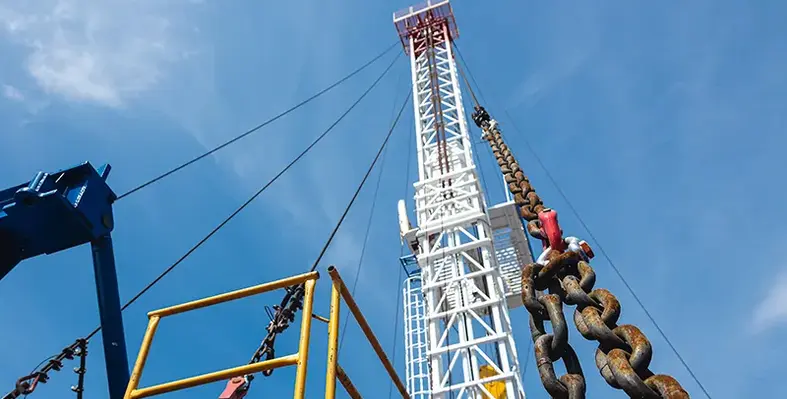
 Petronas, through Malaysia Petroleum Management (MPM), has launched the Hydraulic Workover Unit (HWU) Academy to develop Malaysian talent and strengthen national capabilities in well abandonment and decommissioning.
Petronas, through Malaysia Petroleum Management (MPM), has launched the Hydraulic Workover Unit (HWU) Academy to develop Malaysian talent and strengthen national capabilities in well abandonment and decommissioning.
“The HWU Academy’s programmes are designed to equip Malaysians with the technical expertise needed to lead in emerging opportunities, complementing the national Technical and Vocational Education and Training (TVET) agenda for hands-on, industry-relevant training,” said Datuk Ir. Bacho Pilong, Senior Vice President of MPM.
Petronas noted in a statement that thenew academy underscores its commitment to ensure “the continuous development of skilled talent to support safe, cost-efficient and sustainable Plug and Abandonment (P&A) operations, a vital component of Malaysia’s upstream lifecycle.”
Building on a 2024 Memorandum of Understanding (MoU) between MPM and industry partners, the HWU Academy has progressed from concept to implementation, including two successful pilot training sessions to validate the programme framework.
Serving as a centre of excellence, it will provide hands-on training using retired assets such as the Velesto HWU Gait-01 training unit.
Learners will also benefit from technology-driven modules developed with Halliburton, featuring virtual reality simulators and digital learning tools to enhance technical proficiency and operational readiness.
In addition, the academy will strengthen academic–industry collaboration through strategic partnerships with leading universities such as Universiti Malaysia Sabah (UMS), Kolej Kemahiran Tinggi MARA (KKTM), Universiti Teknologi Malaysia (UTM), Universiti Teknologi PETRONAS (UTP) and Universiti Teknologi MARA (UiTM).
This will also include collaboration with key ministries such as the Ministry of Human Resources (KESUMA) and the Ministry of Higher Education (KPT), and the Malaysian Oil and Gas Services Council (MOGSC).
These collaborations aim to facilitate student enrolment, programme accreditation and grant accessibility, whilst attracting both local and international talent.
“This initiative aligns with Petronas’ aspiration to strengthen the local oil and gas ecosystem, empowering Malaysians to play a leading role in shaping the future of our industry,” said Pilong.
“Velesto Energy Academy and ZNUSS will be the first to embark on this exciting training journey. This partnership reinforces our collective commitment to continuity, consistency and standardisation in developing Malaysia’s HWU capability through the HWU Academy framework.”
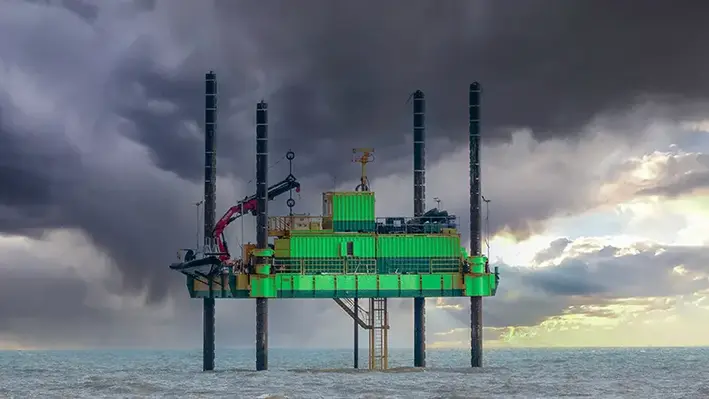
 The Shah Deniz consortium has recently awarded three significant offshore contracts valued at around US$700mn for the next phase of the Shah Deniz Compression (SDC) project.
The Shah Deniz consortium has recently awarded three significant offshore contracts valued at around US$700mn for the next phase of the Shah Deniz Compression (SDC) project.
These contracts, granted to the Saipem/BOS Shelf joint venture, will play a crucial role in expanding the capabilities of the Shah Deniz gas field, one of the world’s largest offshore gas reserves.
The work covered by the new contracts includes the transportation and installation of a 19,000-tonne compression platform, set to be placed in the Caspian Sea. Additionally, the project will involve the construction and installation of approximately 26 km of offshore pipelines, which will link the new compression facility with existing infrastructure at the Shah Deniz field.
Onshore activities will take place at the Baku Deep Water Jacket Factory, operated by BOS Shelf, while offshore construction will be carried out using two of Azerbaijan’s flagship vessels: the Khankendi subsea construction vessel, owned by the Shah Deniz consortium, and the Israfil Huseynov pipelay barge, owned by Azerbaijan Caspian Shipping Company (ASCO). Both vessels will be operated by Saipem, under the terms of the contracts.
According to Matt Kirkham, BP’s Vice President of Projects for Azerbaijan, Georgia, and Turkey, said, “With the award of these new contracts for major construction and installation works, we are making significant progress on the SDC project. The contracts will fully leverage local fabrication yards and infrastructure, engaging the local workforce. This once again demonstrates that Azerbaijan possesses world-class onshore fabrication and offshore installation capabilities that fully meet international standards. Just one example – between 2026 and 2028, a total of 3,040 tonnes of subsea structures will be fabricated and installed as part of the SDC project. It’s a remarkable piece of activity that highlights the scale and ambition of what we are delivering. I would like to thank everyone who was involved in finalizing these important contracts.”
Offshore work is expected to begin in the third quarter of 2026, with the overall project slated for completion in 2029. This ambitious US$2.9bn project aims to access and produce low-pressure gas reserves, with a target of adding 50 bn cubic metres of gas and 25mn barrels of condensate to the Shah Deniz output.
The new compression facility will be located about 3 km from the existing Shah Deniz Bravo platform in 85 metres of water. Equipped with four 11-MW compressors, the facility will be integral in compressing gas from the Shah Deniz Alpha and Bravo platforms before it is transported to the Sangachal terminal for export.
With construction set to wrap up by 2029, the SDC project will position the Shah Deniz field as a vital player in the global energy market for years to come.
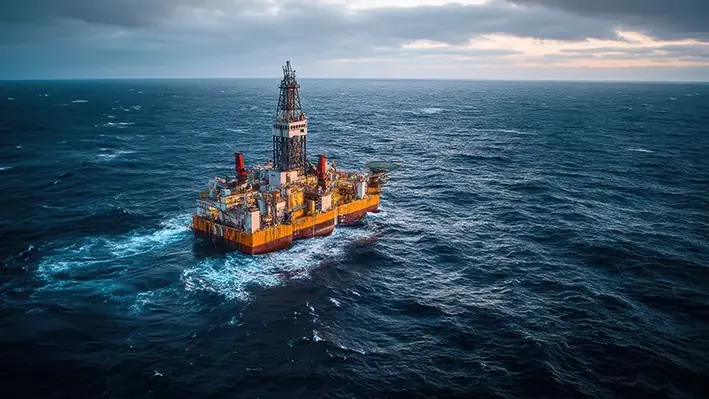
 Ventura Offshore’s Catarina team recently participated in the Well Operations HSE Forum, organised by Eni Indonesia, reaffirming the company’s long-term commitment to safety and operational excellence in the sector.
Ventura Offshore’s Catarina team recently participated in the Well Operations HSE Forum, organised by Eni Indonesia, reaffirming the company’s long-term commitment to safety and operational excellence in the sector.
SSV Catarina is a Ventura-owned semi-submersible rig, currently performing various assignments in the area — all of the company’s other vessels are working offshore Brazil.
The Well Operations HSE Forum was attended by Ventura’s CEO, Guilherme Coelho, and its COO, Luis Mariano, reflecting the significance of its current activities in the Asia Pacific region.
At the start of October, Ventura Offshore announced in a statement to the Oslo stock market that Eni Indonesia had exercised the second of four optional wells in Indonesia for the Catarina, following a first extension back in June.
The announcement is expected to keep the rig utilised into Q1 2026 and further increases the firm backlog of the company by approximately US$10mn, Ventura Offshore noted in the statement.
“Further exercise by Eni of the remaining two optional wells in Indonesia could keep the rig utilised through Q2 2026,” it added.
In its Q2 2025 results, Ventura Offshore also announced additional operating expenditure for ancillary services for the Catarina contract, to be fully reimbursed by its customer, plus a market-based margin.
Eni has been operating in Indonesia since 2001 and has a portfolio of assets spanning exploration, development and production.
It has a current equity production of around 95,000 barrels of oil equivalent per day in East Kalimantan.
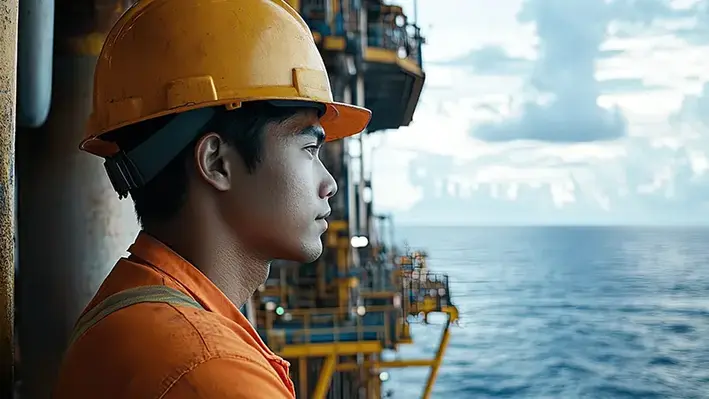
 Hibiscus Petroleum has outlined how its commitment to excellence in well management and services and other offshore operations have been recognised by Malaysian authorities.
Hibiscus Petroleum has outlined how its commitment to excellence in well management and services and other offshore operations have been recognised by Malaysian authorities.
In an October investor presentation, the company outlines various awards by state operator Petronas in 2025, in areas such as production enhancement and idle well reactivation at South Furious in North Sabah.
It is also recognised for its well management in lost time and injury, optimising and sustaining output, as well as proactively converting high pressure gas to a low pressure system for production optimisation.
The company also works with leading offshore contractors and service providers, including EEST, which completed a contract in 2023 for well intervention services on its Malaysian assets.
This project entailed the provision of well workover, re-completion and well plug and abandonment services using the EEST-502 hybrid hydraulic workover unit.
In the presentation, Hibiscus said that “invaluable goodwill with regulators” had created access to further opportunities.
As well as maximising potential from existing assets offshore Malaysia — and in other territories across Asia, including Brunei and Vietnam — Hibiscus is also stepping up its commitment towards net zero 2050 and various transition initiatives.
This includes leveraging on core competencies to operate and maintain decentralised power generation with strategic collaborations in this niche set to be announced in due course. the company noted.
The group already generates 126 megawatts (MW) of power offshore across its assets and the intention is to transfer this know-how to address electricity generation, specifically to support data centres or the semi-conductor industry in Malaysia, it added.
The company also intends to invest in solar projects for internal use to reduce operating expenditure on oil and gas assets, with a potential new 12 MW solar farm in Brunei for a low-pressure compressor project.
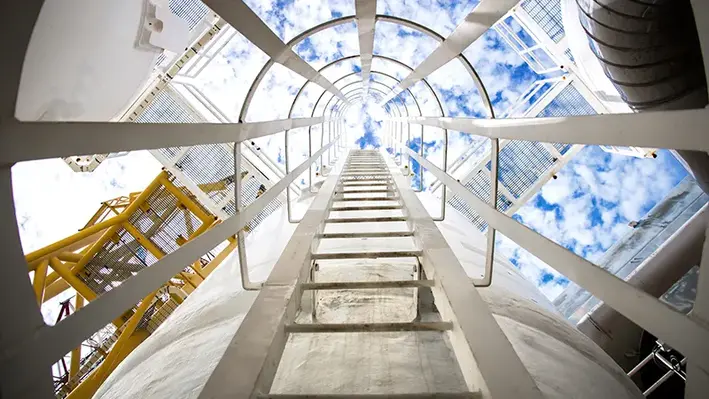
 Aiming the delivery of incremental production volumes in 2026 and beyond, Pharos Energy will be commencing a six-well campaign in Vietnam.
Aiming the delivery of incremental production volumes in 2026 and beyond, Pharos Energy will be commencing a six-well campaign in Vietnam.
As well interventions and optimisation opportunities maintained production stability on both TGT and CNV wells, the company is now set to further drill infill wells and appraisal wells from these prospects.
Pharos has secured rig contracts for the drilling of three infill wells and the 18X appraisal well, targeting TGT’s western area. It is also planning the drilling of one infill well and the 5X-LI appraisal well to tap into the norther part of the CNV field.
Speaking of the company’s progress in Vietnam, Katherine Roe, Chief Executive Officer, said, "In Vietnam, we will begin an important and material six-well drilling campaign in the fourth quarter, with results expected in the first half of 2026. Preparations for drilling the TGT appraisal well 18X to unlock future upside are progressing well and, together with the planned CNV 5X-L1 appraisal and infill drilling campaign, are expected to de-risk additional development opportunities and drive production growth from 2026 onwards. On our exploration blocks 125 & 126, we have engaged with an independent third party adviser to conduct a formal process to identify farm-in partners. This process, together with the ordering of long lead items, provides optionality to pursue the long-term potential of these important exploration assets. The recent approval of a two-year PSC extension in June further supports this optionality."
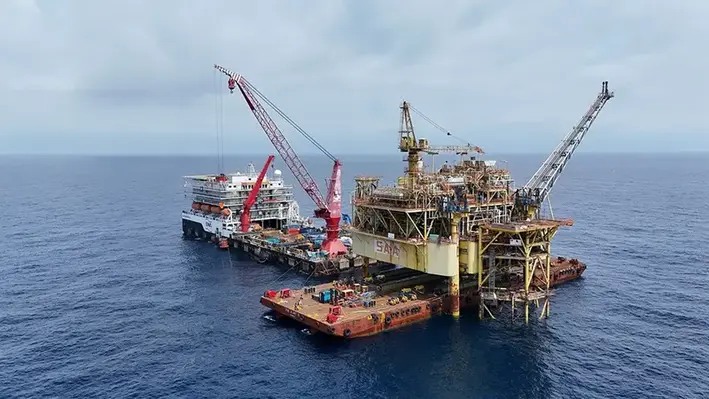
 Heavy lifting giant Sarens has outlined its role in the dismantling of the South Angsi Alpha offshore platform in Malaysia.
Heavy lifting giant Sarens has outlined its role in the dismantling of the South Angsi Alpha offshore platform in Malaysia.
The dismantled platform, weighing around 4,000 tons, is the largest ever dismantled and reused in Malaysia, with part of its structure already located on the seabed, where it will serve as a support for the creation of artificial reefs.
Sarens, working on behalf of Marine Masters, used 16 units of 450/650 ton strand jack combinations to lower the Mobile Offshore Application Barge (MOAB) onto the barge on which the topside was loaded, in what is now the first task of this type carried out by the group’s Asia Pacific (APAC) team.
This was the first time Sarens APAC had worked on a decommissioning task using a strand jack solution, the company noted in a statement, so a significant amount of preliminary study was required to meet all the necessary requirements to meet the safety standards of the process, while ensuring that no downtime occurred.
Located in Block PM 305, approximately130 km from Terengganu, off the coast of West Malaysia, the South Angsi Alpha platform was in service from August 2005 until its closure in September 2019.
The floating storage and offloading vessel was decommissioned almost a year later, in March 2020, while the two-phase wells plugging and abandonment campaign was completed in August 2022.
“Once the main platform had been lowered, the topside, the 13 conductors and their four support legs were separated,” the Sarens statement noted.
“The topside was transported to the coast at the Labuan Shipyard, where the loose elements were unloaded.”
The platform's substructure was then sunk to the seabed, at a depth of approximately 70 metres, where it will now serve as a structure for the creation of artificial reefs.
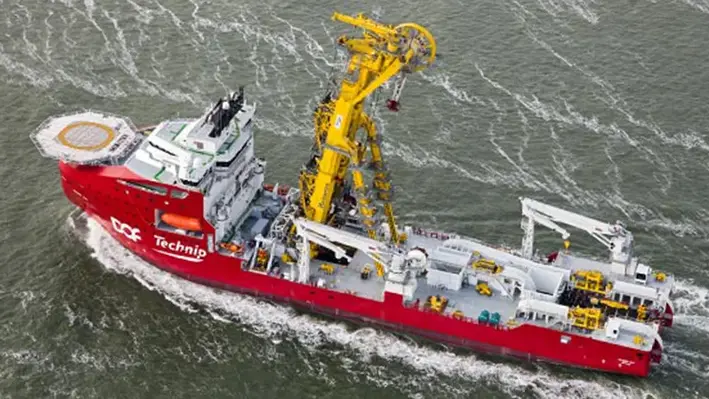
 DOF Group, a Norwegian vessel owner, has secured a new contract in the Asia Pacific (APAC) region for mooring hook-up services.
DOF Group, a Norwegian vessel owner, has secured a new contract in the Asia Pacific (APAC) region for mooring hook-up services.
The contract scope includes DOF’s complete suite of in-house services, such as project management, engineering, procurement, and logistics support. For this project, the Skandi Hercules, a 109.6-meter vessel, will be utilised for mooring and subsea installation services.
Offshore execution is scheduled for the first quarter of 2026, with an estimated vessel utilisation of around four weeks. The total contract value is capped at $15 million, which DOF classifies as a smaller-sized contract.
The Skandi Hercules had previously provided similar services offshore West Australia. In addition to this contract, DOF Group recently announced a long-term commitment in the APAC region. This commitment involves a construction support vessel (CSV) for subsea construction, inspection, repair, and maintenance (IRM), as well as remotely operated vehicle (ROV) services for depths of up to 3,000 metres. The contract, awarded by an international operator, is set to commence in January 2026 for a one-year duration, with options for further extensions.
This new contract reinforces DOF’s growing presence and capabilities in the APAC market.
Page 1 of 14
Copyright © 2025 Offshore Network